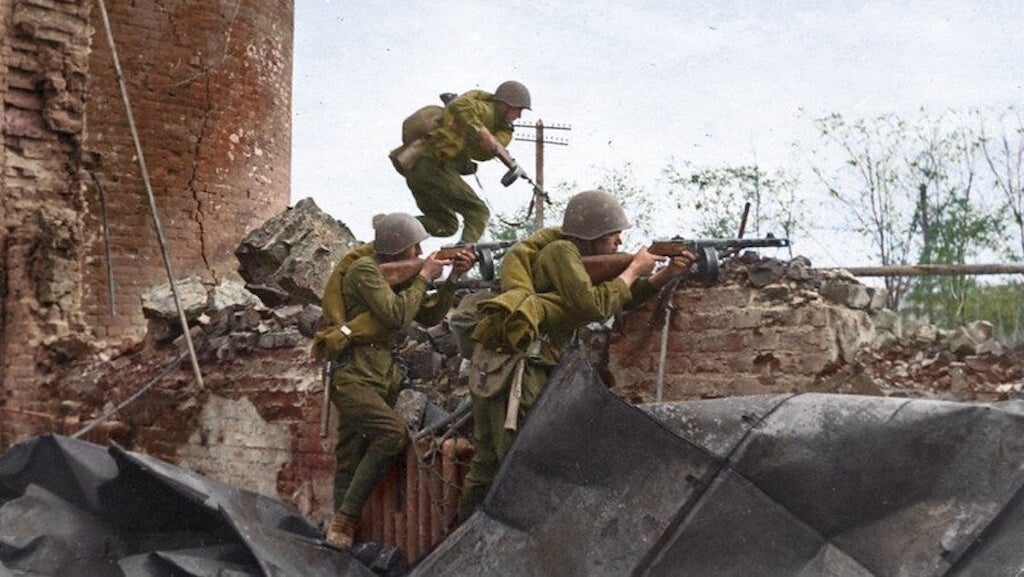In the Battle of Stalingrad a group of 25 men in a nearly abandoned apartment held off thousands of German soldiers during nearly two months of fighting. Time and time again, the assaulting German forces attacked the building occupied by Junior Sgt. Yakov Pavlov and his platoon.
In the fighting at Stalingrad, Russian and German soldiers clashed in bloody, close-quarters combat. Some buildings held Germans and Russians on different floors for days, fighting the other side through the stairwells.
One of these heavily contested buildings was a four-story apartment building that overlooked the Volga river and had a clear line of fire down two roads intersecting in front of it. Whoever controlled that building could stop nearly any traffic moving within a kilometer of it.
The Russian Army sent a 30-man platoon to take the building from German occupiers, but only four survivors were left victorious. Junior Sgt. Pavlov, now the acting platoon commander, and his three men began constructing defenses of barbed wire and mines while also requesting reinforcements. In the basement of the building, 10 Russian civilians huddled with slim hopes of surviving the battle.
When 21 Russian soldiers arrived, they helped prepare the building for an extended siege. A PTRS-41 anti-tank rifle was placed on the roof, machine guns were placed in every available window facing the main square, mortars were emplaced, and walls were knocked out to facilitate communications between the men.

Then the Germans came. Armored and infantry columns would move up the streets to try and take out the building. They were forced to cross “9th January Square,” a wide open space named for Russia’s Bloody Sunday. While the Germans were in the square, the Russians would strike.
The Russian soldiers would open fire with the anti-tank rifle on the roof, piercing the thin turret armor of the tanks. The men found that if they waited until the tanks were within 25 meters of the building, the enemy tanks could not elevate their own guns high enough to retaliate.
Meanwhile, machine gunners would begin firing from the windows, shattering the bodies of German infantrymen. When they had the rounds, the men would begin lobbing mortars out of the building and onto the attacking column.
From Sep. 23 to Nov. 25, 1942, this fighting continued unabated. The Germans would attack at regular intervals and would often keep a few machine guns firing during lulls to keep the Russians from sleeping.
The Germans were devastated in the fight for the building that they eventually marked on their maps as a fortress. Inside, the Russians were sticking to Order 227 which demanded that Soviet soldiers take, “Not one step back!”
They held out until Nov. 25 when a Russian counterattack allowed fresh soldiers to replace Pavlov and his men in the defense of Pavlov’s house. The civilians in the basement were also allowed to evacuate.

The building was reconstructed after the war. Bricks and materials from the bombed out structure that Pavlov and his men held was used to construct a monument on the corner of the new building.


